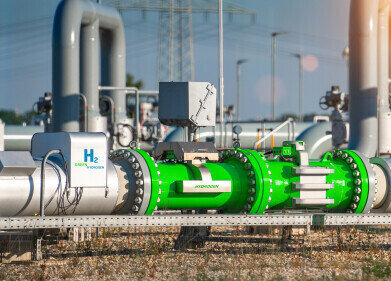Biofuel industry news
What Are the Requirements for Fuel Storage?
Jan 31 2022
With a total storage capacity of 400 million cubic metres, the Stublach Gas Storage Project salt cavern facility is one of the largest in the UK. The Kingsbury Oil Terminal in the Midlands is another mammoth facility, providing storage for Shell, Essar, Warwickshire Oil Storage Limited, the British Pipeline Agency and Valero Energy Corporation.
From enormous national facilities to small-scale and even at-home operations, the UK government enforces strict requirements for fuel storage. Read on to find out more:
Combustible vs. flammable fuels
Fuel storage requirements often depend on whether the product is combustible or flammable. This is determined by assessing the fuel flash point, i.e. the lowest temperature needed to ignite the fuel with an ignition source.
The NFPA 30, an international Flammable and Combustible Liquids Code published by the National Fire Protection Association, offers guidance on the definitions and flash points of combustible and flammable liquid fuels.
Above-ground tanks
From refineries to forecourts, above-ground tanks are used to store fuel across the UK. Most above-ground facilities must feature emergency relief venting that allows internal pressure to escape in the case of a fire.
Underground tanks
Underground tanks are used at the majority of petrol stations around the world, as well as other commercial fuel storage facilities. There are strict regulations for the use of corrosion-resistant materials for both tanks and piping. Most underground tanks must be installed on top of compacted gravel or sand to maximise stability and prevent the risk of leaks. Even the smallest petrol stations in the most remote towns must comply with these rules.
Geographic requirements
There are strict rules outlining how far storage facilities can be from private property lines, as well as buildings and structures on the site. Operators must also comply with restrictions on proximity to waterways and sewage systems.
At-home storage
In the UK, home and business owners are allowed to store up to 30 litres of fuel for personal use. For amounts over 30 litres, the individual must notify their local Petroleum Enforcement Authority.
A new era of biofuel storage
While traditional fuels such as crude oil and natural gas continue to power the UK, the biofuel revolution is well underway. In late 2021, Stanlow Terminals Limited (STL) announced a three-year plan to develop one of the largest biofuel storage hubs in the UK, with an impressive 300,000 cubic metres of capacity. The new facility will play a central role in supporting the national transition to net zero emissions.
“These key investments, and continued growth of our strategic relationships with customers, means Stanlow Terminals is firmly on track to becoming the largest sustainable storage and logistics hub in the UK. The Government has set out a clear plan for decarbonising the economy and we are committed to playing our part in helping to achieve that,” says Prashant Ruia, non-executive Chairman at Essar, the parent company of Stanlow Terminals Limited.
Find out more about how biofuels are transforming the energy industry in ‘Recent Advances in Converting Ocean MSW to a variety of useful Fuels.’
Digital Edition
PIN 26.1 Feb/Mar 2025
March 2025
Analytical Instrumentation - Elemental Analysis for Quality and Process Control at Refineries, for Lubricants and Wear Metals in Engine Oils - Synthetic Lubricants: New Developments - Scaling...
View all digital editions
Events
Apr 08 2025 Birmingham, UK
Apr 08 2025 Kielce, Poland
Apr 08 2025 Ravenna, Italy
Apr 08 2025 Southampton, UK
Apr 08 2025 London, UK



















